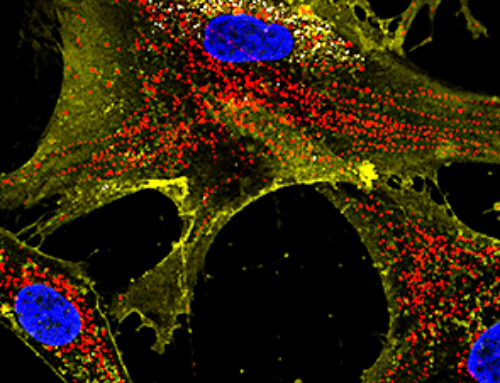Investigations into gravitational waves and their relationship with Finsler geometry are providing new insights into spacetime, suggesting ways to harmonize relativity and quantum mechanics.
When speaking of our universe, it's often said that 'matter tells spacetime how to curve, and curved spacetime tells matter how to move'. This is the essence of Albert Einstein's famous general theory of relativity, and describes how planets, stars, and galaxies move and influence the space around them. While general relativity captures much of the big in our universe, it's at odds with the small in physics as described by quantum mechanics. For his PhD research, Sjors Heefer explored gravity in our universe, with his research having implications for the exciting field of gravitational waves, and perhaps influencing how the big and small of physics can be reconciled in the future.
Unveiling the Universe: Einstein's Theories and Beyond
A little over a hundred years ago, Albert Einstein revolutionized our understanding of gravity with his general theory of relativity. "According to Einstein's theory, gravity is not a force but emerges due to the geometry of the four-dimensional spacetime continuum, or spacetime for short," says Heefer. "And it's central to the emergence of fascinating phenomena in our universe such as gravitational waves."
Massive objects, such as the Sun or galaxies, warp spacetime around them, and other objects then move along the straightest possible paths – otherwise known as geodesics – through this curved spacetime.
Due to the curvature, however, these geodesics are not straight in the usual sense at all. In the case of the planets in the solar system, for instance, they describe elliptical orbits around the sun. In this way, general relativity elegantly explains the movement of the planets as well as numerous other gravitational phenomena, ranging from everyday situations to black holes and the Big Bang. As such it remains a cornerstone of modern physics.
Resolving Theories: Quantum Mechanics vs. General Relativity
While general relativity describes a host of astrophysical phenomena, it clashes with another fundamental theory of physics – quantum mechanics.
"Quantum mechanics suggests that particles (like electrons or muons) exist in multiple states at the same time until they are measured or observed," says Heefer. "Once measured, they randomly select a state due to a mysterious effect referred to as the 'collapse of the wave function.'"
In quantum mechanics, a wave function is a mathematical expression that describes the position and state of a particle, such as an electron. And the square of the wave function leads to a collection of probabilities of where the particle might be located. The larger the square of the wave function at a particular location, the higher the probability that a particle will be located at that location once it is observed.
"All matter in our universe appears to be subject to the strange probabilistic laws of quantum mechanics," Heefer notes. "And the same is true for all forces of nature – except for gravity. This discrepancy leads to deep philosophical and mathematical paradoxes, and resolving these is one of the primary challenges in fundamental physics today."
Bridging the Gap With Finsler Geometry
One approach to resolving the clash of general relativity and quantum mechanics is to expand the mathematical framework behind general relativity.
In terms of mathematics, general relativity is based on pseudo-Riemannian geometry, which is a mathematical language capable of describing most of the typical shapes that spacetime can take.
"Recent discoveries indicate, however, that our universe's spacetime might be outside the scope of pseudo-Riemannian geometry and can only be described by Finsler geometry, a more advanced mathematical language," says Heefer.
Time for Finsler to Shine
In Finsler geometry – which is named after the German and Swiss mathematician Paul Finsler, the distance between two points – A and B – is not just dependent on the location of the two points. It also depends on whether one is traveling from A to B or the other way around.
"Imagine walking towards a point at the top of a hill. Walking up the steep slope towards the point costs you a lot of energy to cover the distance, and it might take you a very long time. The way back down, on the other hand, will be much easier and will take much less time. In Finsler geometry this can be accounted for by assigning a larger distance to the way up than to the way down."
Rewriting general relativity using the mathematics of Finsler geometry leads to Finsler gravity, a more powerful theory of gravity, which captures everything in the universe explained by general relativity, and potentially much more than that.
Exploring the Possibilities of Finsler Gravity
To explore the possibilities of Finsler gravity, Heefer needed to analyze and solve a certain field equation.
Physicists like to describe everything in nature in terms of fields. In physics, a field is simply something that has a value at each point in space and time.
A simple example would be temperature, for instance; at any given point in time, each point in space has a certain temperature associated with it.
A slightly more complex example is that of the electromagnetic field. At any given point in time, the value of the electromagnetic field at a certain point in space tells us the direction and magnitude of the electromagnetic force that a charged particle, like an electron, would experience if it were located at that point.
And when it comes to the geometry of spacetime itself, that is also described by a field, namely the gravitational field. The value of this field at a point in spacetime tells us the curvature of spacetime at that point, and it is this curvature that manifests itself as gravity.
Discovery of New Spacetime Geometries
Heefer turned to the Christian Pfeifer and Mattias N. R. Wohlfarth's vacuum field equation, which is the equation that governs this gravitational field in empty space. In other words, this equation describes the possible shapes that the geometry of spacetime could take in the absence of matter.
Heefer: "To good approximation, this includes all interstellar space between stars and galaxies, as well as the empty space surrounding objects such as the Sun and the Earth. By carefully analyzing the field equation, several new types of spacetime geometries have been identified."
The Era of Gravitational Waves
One particularly exciting discovery from Heefer's work involves a class of spacetime geometries that represent gravitational waves—ripples in the fabric of spacetime that propagate at the speed of light and can be caused by the collision of neutron stars or black holes, for example.
The first direct detection of gravitational waves on September 14th, 2015, marked the dawn of a new era in astronomy, allowing scientists to explore the universe in an entirely new way.
Since then, many observations of gravitational waves have been made. Heefer's research indicates that these are all consistent with the hypothesis that our spacetime has a Finslerian nature.
The Future of Finsler Gravity Research
While Heefer's results are promising, they only scratch the surface of the implications of the field equation of Finsler gravity.
"The field is still young and further research in this direction is actively ongoing," says Heefer. "I'm optimistic that our results will prove instrumental in deepening our understanding of gravity and I hope that, eventually, they may even shine light on the reconciliation of gravity with quantum mechanics."
Title of PhD thesis: Finsler Geometry, Spacetime & Gravity: From Metrizability of Berwald Spaces to Exact Vacuum Solutions in Finsler Gravity. Supervisors: Luc Florack and Andrea Fuster.
News
Novel mRNA therapy curbs antibiotic-resistant infections in preclinical lung models
Researchers at the Icahn School of Medicine at Mount Sinai and collaborators have reported early success with a novel mRNA-based therapy designed to combat antibiotic-resistant bacteria. The findings, published in Nature Biotechnology, show that in [...]
New skin-permeable polymer delivers insulin without needles
A breakthrough zwitterionic polymer slips through the skin’s toughest barriers, carrying insulin deep into tissue and normalizing blood sugar, offering patients a painless alternative to daily injections. A recent study published in the journal Nature examines [...]
Multifunctional Nanogels: A Breakthrough in Antibacterial Strategies
Antibiotic resistance is a growing concern - from human health to crop survival. A new study successfully uses nanogels to target and almost entirely inhibit the bacteria P. Aeruginosa. Recently published in Angewandte Chemie, the study [...]
Nanoflowers rejuvenate old and damaged human cells by replacing their mitochondria
Biomedical researchers at Texas A&M University may have discovered a way to stop or even reverse the decline of cellular energy production—a finding that could have revolutionary effects across medicine. Dr. Akhilesh K. Gaharwar [...]
The Stunning New Push to Protect the Invisible 99% of Life
Scientists worldwide have joined forces to build the first-ever roadmap for conserving Earth’s vast invisible majority—microbes. Their new IUCN Specialist Group reframes conservation by elevating microbial life to the same urgency as plants and [...]
Scientists Find a Way to Help the Brain Clear Alzheimer’s Plaques Naturally
Scientists have discovered that the brain may have a built-in way to fight Alzheimer’s. By activating a protein called Sox9, researchers were able to switch on star-shaped brain cells known as astrocytes and turn them into [...]
Vision can be rebooted in adults with amblyopia, study suggests
Temporarily anesthetizing the retina briefly reverts the activity of the visual system to that observed in early development and enables growth of responses to the amblyopic eye, new research shows. In the common vision [...]
Ultrasound-activated Nanoparticles Kill Liver Cancer and Activate Immune System
A new ultrasound-guided nanotherapy wipes out liver tumors while training the immune system to keep them from coming back. The study, published in Nano Today, introduces a biodegradable nanoparticle system that combines sonodynamic therapy and cell [...]
Magnetic nanoparticles that successfully navigate complex blood vessels may be ready for clinical trials
Every year, 12 million people worldwide suffer a stroke; many die or are permanently impaired. Currently, drugs are administered to dissolve the thrombus that blocks the blood vessel. These drugs spread throughout the entire [...]
Reviving Exhausted T Cells Sparks Powerful Cancer Tumor Elimination
Scientists have discovered how tumors secretly drain the energy from T cells—the immune system’s main cancer fighters—and how blocking that process can bring them back to life. The team found that cancer cells use [...]
Very low LDL-cholesterol correlates to fewer heart problems after stroke
Brigham and Women's Hospital's TIMI Study Group reports that in patients with prior ischemic stroke, very low achieved LDL-cholesterol correlated with fewer major adverse cardiovascular events and fewer recurrent strokes, without an apparent increase [...]
“Great Unified Microscope” Reveals Hidden Micro and Nano Worlds Inside Living Cells
University of Tokyo researchers have created a powerful new microscope that captures both forward- and back-scattered light at once, letting scientists see everything from large cell structures to tiny nanoscale particles in a single shot. Researchers [...]
Breakthrough Alzheimer’s Drug Has a Hidden Problem
Researchers in Japan found that although the Alzheimer’s drug lecanemab successfully removes amyloid plaques from the brain, it does not restore the brain’s waste-clearing system within the first few months of treatment. The study suggests that [...]
Concerning New Research Reveals Colon Cancer Is Skyrocketing in Adults Under 50
Colorectal cancer is striking younger adults at alarming rates, driven by lifestyle and genetic factors. Colorectal cancer (CRC) develops when abnormal cells grow uncontrollably in the colon or rectum, forming tumors that can eventually [...]
Scientists Discover a Natural, Non-Addictive Way To Block Pain That Could Replace Opioids
Scientists have discovered that the body can naturally dull pain through its own localized “benzodiazepine-like” peptides. A groundbreaking study led by a University of Leeds scientist has unveiled new insights into how the body manages pain, [...]
GLP-1 Drugs Like Ozempic Work, but New Research Reveals a Major Catch
Three new Cochrane reviews find evidence that GLP-1 drugs lead to clinically meaningful weight loss, though industry-funded studies raise concerns. Three new reviews from Cochrane have found that GLP-1 medications can lead to significant [...]





















